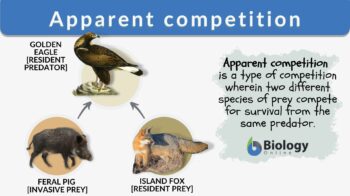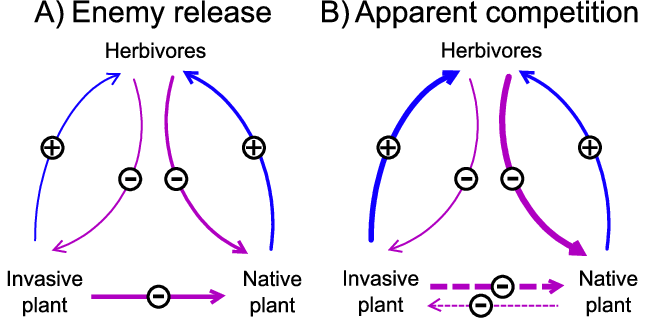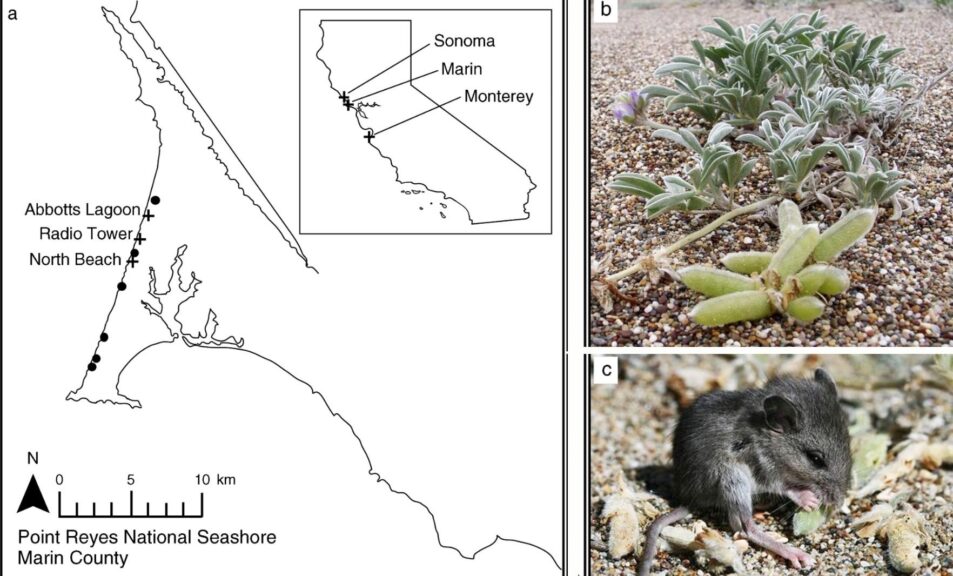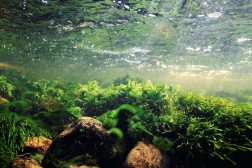
Apparent competition
n., plural: apparent competitions
[əˈpærənt ˌkɑːmpəˈtɪʃən]
Definition: Apparent competition occurs when the two different species of prey, with the same predator, indirectly compete for survival.
Table of Contents
Competition Definition
One of the many branches of biology is ecology. Ecology is the study of the relationships that the organisms have which each other and their immediate environments. This included humans, plants, and animals. Believe it or not, many living things depend on each other and need the other to survive. In ecology, some subdivisions are studied in detail such as biodiversity, ecosystems, competition, and predation just to name a few.
Predation and competition may be two of the most common things that come to mind when a person thinks about the wild and surviving in it. Predation is an ecological interaction between two organisms in which one is being eaten by the other. The organism that is the one being consumed is called the prey and the organism hunting the prey is called the predator. Competition between animals is another ecological process that occurs. This process occurs when organisms’ niches intertwine or overlap and are forced to depend on the same resources. These resources may become less abundant as the organisms are forced to compete for them.
Apparent competition is a form of competition between species, or a group of organisms indirectly competing with another species or group of organisms, which both of them serve as prey of a predator. Based on the mechanism, the types of competition include apparent competition, exploitation competition, and interference competition. In apparent competition, species compete indirectly with each other as prey.Example: Apparent competition between nettle aphids (prey A) and grass aphids (prey B); both are prey to Coccinellidae (predator). The increase in the population of grass aphids (prey B) attracted more Coccinellidae (predator) in the area, resulting in the increased predation of Coccinellidae of nettle aphids (prey A).
Types of Competition
There are different types of competition in ecology and these are often because of the factors that influence them. For instance, intraspecific and interspecific competition occurs between the same species and between organisms of different species, respectively. These kinds of competition depend on the taxonomical relationships or classifications between organisms. A simple example of intraspecific competition is the fact that plants are unable to grow too close to one another. Plants often release specific chemicals that prevent others from growing around them so they do not have to compete for nutrients and space.
Indirect and direct competitions are determined by influential factors. Indirect competition occurs when the species in question will influence the obtainability of resources whereas direct competition occurs when the species influence resource availability in their ecosystems. Monkeys all living in the same section of the forest will influence each other directly, hence direct competition. However, monkey tribes living in different sections of the forest but using the same pond for water will indirectly compete for water.
Some competition types can fall under more than one classification. They can have more than one factor influencing them. For instance, the competition that is based on mechanism can be either interference, exploitative and apparent competition. These competition types are either direct or indirect. Interference competition is a physical type of direct competition where organisms influence the survival process of others such as reproduction and foraging.
Kangaroos go through interference competition when the males fight to see who will get to mate with the females. Exploitative competition happens when species are linked through a mutual limiting resource. This resource acts as a mediator between the species and is a form of indirect competition. In this case, some organisms obtain their resources before others do, leaving them with nothing to thrive on. This could happen in a case of a new litter of cats and the first set of kittens to get to the breast milk usually have a higher chance of survival than those who don’t. Apparent competition is a different kind of mechanism competition.
This video will give a recap on all the different types of competition.
Apparent Competition Definition
What is apparent competition (ecology) and how can one define apparent competition? In ecology, apparent competition can be described as a type of indirect competition in which the competing organisms have the same predator. Usually, this type of competition will commence when one of the prey species populations begins to grow. The more prey that is present, the more food source available for the predator. If the predator has a good food source, they will thrive and perform at their optimum, which in turn will allow their population to grow as well. More predators mean that both the prey species are going to be hunted at a greater rate in that particular ecosystem. A decrease in one prey can also affect the population of the other prey as now they will be heavily targeted by the predator.
Sometimes, the apparent competition between species and organisms can be as strong or even stronger than direct competition. This is because, though the increasing prey species is not causing direct harm to plateaued population species, the apparent competition can happen so quickly that it may even cause that species to become endangered or extinct.
Apparent Competition Examples

Apparent competition can occur when an invasive species is introduced to an ecosystem. Take, for example, there can be apparent competition among two plant species and a set of herbivores. One plant species is native to the ecosystem while the other is an invasive species. Invasive species tend to flourish quickly in new environments and rapidly increase in population. If the invasive species increases in number then that makes more plants available for the herbivores to eat. This will increase the population of the herbivore which in turn can be harmful to the native species since there are more herbivores to prey on them. This can be seen in Fig 1 where the positives show that the herbivore is benefitting. However, we see negative, where the plants are suffering. The bolder arrows towards the native plant indicate that they suffer more in this process.
We see this with the introduction of an invasive grass, Ammophila arenaria, in California in the United States. The abundant increase of this grass became the largest food source for a native rodent, Peromyscus maniculatus. Thus, the rodent population became larger in number and so more rodents fed on the invasive grass and a native plant, Lupinus tidestromii. However, with the competition for nutrients and water from the invasive grass and the predation from the rodents, the Lupinus tidestromii population has become endangered as the plant species gets caught in finding ways to survive despite its competitive environment. Figure 2 below depicts the area of study, the invasive and native plant as well as the native rodent.

Another way apparent competition takes place is when the food source of one prey species becomes more abundant. That causes the increase of the prey because there are more nutrients available for them to grow. This is how apparent competition begins as the prey population becomes larger and so the predators’ as well hence causing the detriment of the other prey species. A common case where a snake preys on both mice and a small breed of birds. There is an increase in flowers as it is spring season and so there is more nectar available for the birds to feed on. This helps the bird population to increase since their food source is more substantial. An increase in birds means more prey for the snake to feed on. Despite the bird population going up, the mice population remains the same because their source of food remained the same as well. This causes apparent competition between the species because the increase of the bird population will lead to the indirect decrease of the mice population. On the other hand, if the bird population decreases, the mice population will now be heavily hunted by the snake. This will also cause a drastic decrease in the mice population and both preys suffer once again.
Try to answer the quiz below to check what you have learned so far about apparent competition.
Reference
- BBC. (2021). Ecosystems. BBC Bitesize. https://www.bbc.co.uk/bitesize/guides/z2vjrwx/revision/5
- Biology Online. (2021). Predation. Biology Online.
https://www.biologyonline.com/dictionary/predation - Dangremond, E. M., Pardini, E. A., & Knight, T. M. (2010). Apparent competition with an invasive plant hastens the extinction of an endangered lupine. Ecology, 91(8), 2261-2271.
- Ecology Society of America. (2021). What is Ecology?. Ecology Society of America. https://www.esa.org/about/what-does-ecology-have-to-do-with-me/
- Lang, J. M. & Benbow, M. E. (2013) Species Interactions and Competition. Nature Education Knowledge 4(4):8.
https://www.nature.com/scitable/knowledge/library/species-interactions-and-competition-102131429/ - Sapkota, A. (2021). Competition Interaction. Microbe Notes. https://microbenotes.com/competition/
- Muller, C. and Godfray, H. (1997). Apparent competition between two aphid species. Journal of Animal Ecology 66(1): 57-64.
©BiologyOnline.com. Content provided and moderated by Biology Online Editors.




